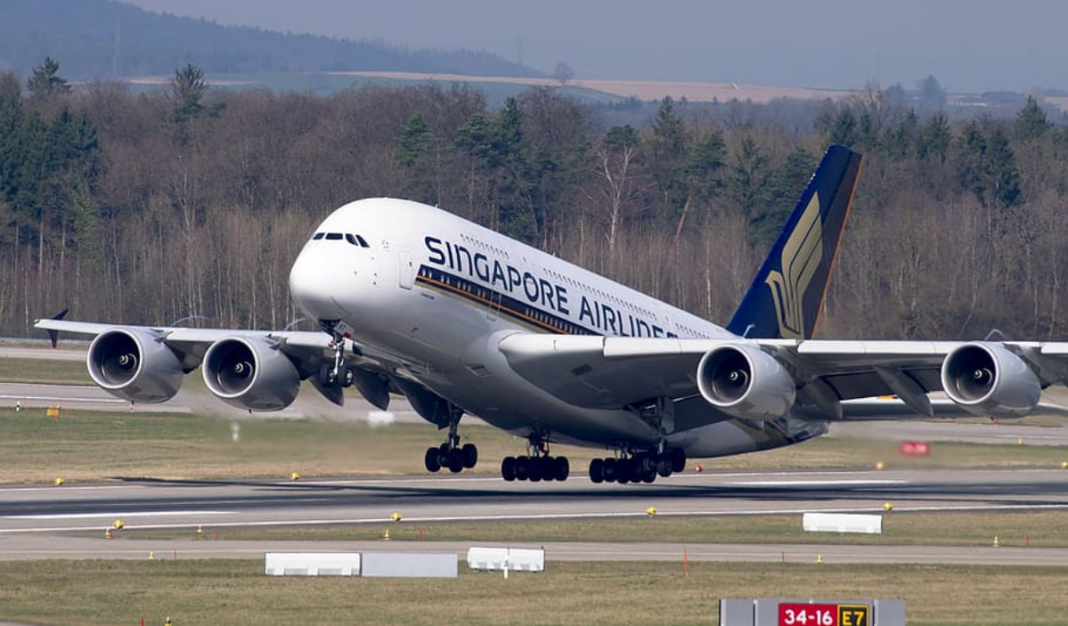Putting aircraft into storage is a well-worn topic this year. Every day, another plane from another airline heads off to long term parking. But few get the attention the A380 does. Airbus’s giant flying folly is turning up in long term airport parking lots around the world.

Alas for the owners, it is not as simple as handing the keys over the valet and walking. Even standing still, the A380 hoovers up money and resources. What’s involved in putting an A380 into long term storage?
To begin with, the aircraft gets prepped for storage. Whether it’s a Cessna or an A380, there are certain similarities. But the bigger the plane, the bigger and more cumbersome the job.
Getting the A380 ready for long term storage
Typically, cleaners scrub the interior of the aircraft, giving it a deep clean. In the current era, that clean maybe even more rigorous than usual. A high-grade disinfectant is used. Surfaces are wiped down. The aircraft’s exterior will usually get a good scrub as well.
All the external holes around the aircraft’s exterior are covered. This includes the pitot and static sensors. Insects like to set up house in these places if left unchecked. That same goes for fuel venting holes and the auxiliary power unit.
“These holes can get mistaken by birds as a rather nice nesting place. We make sure these are fully covered when we store the aircraft and put them to bed,” says Qantas’ Head of Maintenance, John Walker.

Antifungal agents often go into the fuel tanks. Hydraulic fluid is applied to the landing gear to protect it from rust. Critical cables may also need lubricant applied.
Moisture is always a problem when parking planes long term. That’s why airlines like parking their planes in dry climates. Even so, an A380 typically requires over a hundred kilos of moisture absorbers to maintain humidity levels in the cabin and engines.
Maintaining the A380s while in storage
But prepping the aircraft is only the beginning. Just as you wouldn’t leave your car untended at an open-air airport parking lot for a couple of years, you wouldn’t leave your A380 uncared for either.
“It’s quite a process to put the aircraft into storage. But once the storage-induction check is complete, we’ll then start carrying out the periodic checks every week,” says Tom Vincent, managing director at the APAS facility in Alice Springs.
The Alice Springs facility is a temporary home to several Singapore Airlines A380s. It’s an arid climate there, similar to the Victorville facility in California. But while that may reduce moisture threats, places like Alice Springs bring their own unique problems.

“The strength of the Australian sun and the effect of UV light on our cabin and cockpit interiors drives us to ensure that all of the cockpit and cabin windows are either covered by the installed window shades or by attaching additional material to shield the aircraft from the sun,” says John Walker.
These big planes also need to have the wheels rotated every seven to fourteen days to stop flat spots forming. They’ll either get a quick tow or be jacked up and have their wheels rotated on the spot.
Engines will also get fired up every couple of weeks.
Not going off-piste
Like having your car maintained only by authorized mechanics using bona fire parts, A380s need to be up-kept as per Airbus guidelines.
The big, reputable airlines like Singapore Airlines are notoriously picky about their aircraft maintenance. Among other things, taking their eye off the ball has obvious safety repercussions.
So that means while in storage, A380s get looked after as per the operator and manufacturer’s instructions.

Tom Vincent says APAS follows strict protocols to keep the planes they are responsible for in good condition. He dismissed the idea that parking planes is a set and forget proposition. Instead, looking after A380s involves continuous and nuanced work.
If a plane gets stored for more than two years, it usually needs to go back into the air at the two-year mark for a recertification flight. Airbus also requires full landing gear tests done every six months during long-term storage and before re-entering service.
“Long-term storage is a specialized skill. Whether it’s the multiple control surfaces or avionics or hydraulic systems, prolonged storage effectively means an impact to airworthiness,” agrees Satyendra Pandey, an independent consultant and formerly of Go Airlines.
Heading back into the air
How many of the stored Airbus A380s ever fly again for their owner airlines is a million-dollar question. Some airlines, like Air France, have permanently retired their A380 fleets. Others, like Qantas, are all up in the air about it. Some other operators, like Emirates, are stuck with the A380s for the foreseeable future, whether they like it or not.
But most operators are putting their A380s into storage intending to use them again in the future. That is costing the airlines lot of money, so you’d assume this more than wishful thinking.

As a rule, the longer time a plane sits idle, the longer it takes to get ready to fly again. The ongoing checking and maintenance while parked may help minimize this, but only so much time can be shaved off.
There are degrees of parking. Previously, Qantas has said that it would take a week, maybe two, to pull an aircraft out of short term parking and get it ready to fly again.
But most A380s have gone into long term parking. The guiding principle is that the longer time the plane is in storage, the more work needs to be done to see it flying again. But that is why airlines like Singapore Airlines are paying businesses like APAS millions of dollars. When the time comes, the airlines will want their A380s back in the air with a minimum of fuss and delay.
[ad_2]
Source link



